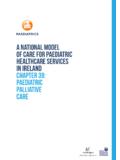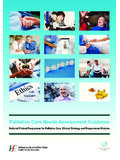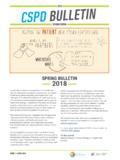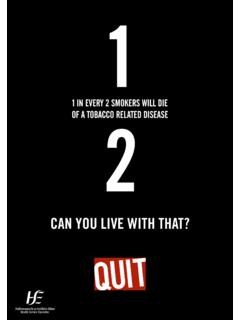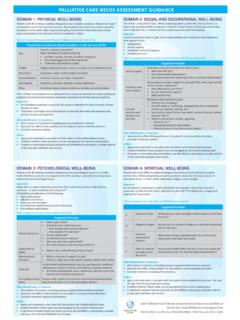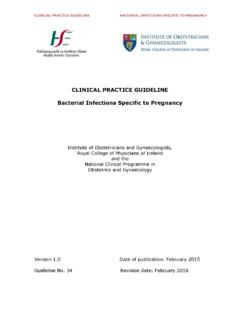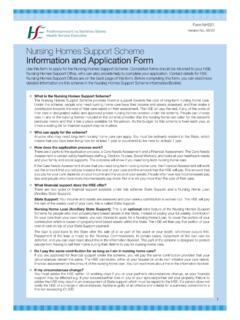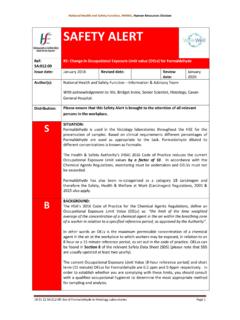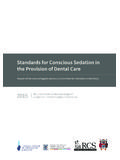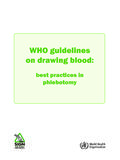Transcription of A National Model of Care for Paediatric Healthcare ...
1 A National Modelof care for PaediatricHealthcare Servicesin IrelandChapter 22:PaediatricDermatologyClinical Strategy and Programmes DivisionTable of Introduction Current Service Provision 2 Primary care 2 Secondary care 2 Tertiary care Proposed Model of care 4 Recommended care Pathways 4 Patient Journey 5 Roles of Healthcare Professionals Involved in Service Provision Requirements for Successful Implementation of Model of care 8 Staffing Requirements and Training 8 Infrastructure 9 Interdependencies with Other Programmes Programme Metrics and Evaluation Clinical Governance Key Recommendations Abbreviations and Acronyms References 131national Clinical Programme for Paediatrics and neonatology.
2 A National Model of care for Paediatric Healthcare services in InTroduCTIonPaediatric dermatology specialises in the management of cutaneous, adnexal and vascular anomalies from birth to adolescence. One in five children is affected by atopic dermatitis, and a diverse range of more than 2,500 dermatological diseases are less frequently encountered. Secondary and tertiary level Paediatric dermatology is characterised by severity or rarity of conditions including genodermatoses, complex vascular anomalies, and severe atopic, inflammatory or blistering diseases resulting in skin CurrenT servICe Primary CareSkin disorders are amongst the most common diseases encountered by health professionals; more than 20% of General Practitioner (GP) consultations have a dermatological component (Centre of Evidence-based Dermatology, Nottingham, 2009).
3 Fewer than ten conditions represent 80% of all primary care referrals. Despite this, education in Dermatology throughout the undergraduate and postgraduate curricula has historically been limited, with less than one in six GPs having any formal training in Dermatology. There has been a well-documented surge in atopic conditions presenting to primary care . There is good evidence to support the assertion that early intervention in atopic dermatitis can mitigate disease severity and persistence, and may prevent development of associated atopic conditions, including asthma, food allergy and anaphylaxis, with significant health and cost implications if not treated appropriately at the time of presentation at a primary care level.
4 Historically, referrals to the service originate predominantly from primary care , with a systematically poor knowledge base for common dermatological conditions. In order to prevent limited tertiary resources at the new children s hospital being overwhelmed, existing referral pathways need to be reconfigured, with access to care initially by local services as strategically and consistently as possible. We anticipate that in order to reverse current referral patterns, significant investment in education is required, focusing on general paediatricians and GPs, and we thus advocate new protected consultant dermatology educator sessions are created to focus on upskilling primary and secondary level health care professionals.
5 This, in combination with the development of a practitioner-focused portal, devising and promoting guidelines and pathways for management of common skin diseases, development of Continuing Medical Education (CME) accredited e-learning and mandatory training in dermatology for GPs and general paediatricians have potential to impact referral patterns in the medium to long secondary CareDedicated Paediatric dermatology clinics are currently held in ten regional centres: Ballinasloe, Castlebar, Cork, Donegal, Drogheda, Galway, Limerick, Mullingar, Sligo and Waterford. Secondary level Paediatric dermatology services should ideally be delivered in well designed, appropriately equipped, child friendly and protected environments which will also require additional investment, manpower and planning (RCPCH, 2011; GMC Guidance, 2012).
6 Historically, there have been few Paediatric dermatology clinical leads, largely due to National pressure on dermatology resources. The development of a National Paediatric Dermatology Network, with local clinical leads in secondary centres, would allow better patient flow, National protocols and strengthen delivery of care . We would anticipate that with increased Paediatric dermatology consultant manpower at the new children s hospital, outreach clinics could be facilitated to augment existing services in peripheral Paediatric centres in the midlands, with appropriate auxiliary staffing and Clinical Programme for Paediatrics and neonatology:a National Model of care for Paediatric Healthcare services in Tertiary CareOur Lady s Children s Hospital, Crumlin (Crumlin) Crumlin provides specialised tertiary level services for the management of complex dermatological conditions not available elsewhere in ireland , including epidermolysis bullosa, genodermatoses, vascular tumours and malformations, management of refractory atopic dermatitis, dedicated systemic immunosuppressive clinics, connective tissue disorders and laser surgery.
7 The department provides one of the busiest outpatient services at Crumlin, reviewing in excess of 7,500 outpatient visits, 500 day cases and 500 inpatient admissions and consultations annually. A 1:3 on-call is also provided. While this is not funded as a National service it de facto performs this role. The British Association of Dermatologists workforce guidelines advocate a minimum of 8-12 consultants for this population base and level of complexity. Currently, the service is provided by three consultants: Dr. Rosemarie Watson (appointed in 1992), Professor Alan Irvine (appointed in 2002), and Dr. Grainne O Regan (appointed in 2012), with a combined commitment of In addition, there are two specialist registrars (1x dermatology and 1x Paediatric ), one senior house officer, 4 WTE clinical nurse specialists, 1 WTE research nurse, senior dietitian, senior occupational therapist, senior physiotherapist, Paediatric psychologist and administrative staff.
8 Despite activity operating greatly in excess of Health Service Executive (HSE) benchmark levels, the service is in crisis. Due to cessation of services in Temple Street Children s University Hospital (Temple Street) in September 2014, all patients with severe disease or on systemic therapies have been transferred to the dermatology services at Crumlin. There is currently no capacity for routine Paediatric dermatology referrals across any of the Dublin sites. Demand has also increased significantly due to closure of Paediatric dermatology services at University Hospital Hospital Paediatric referrals account for 28% of total dermatology referrals in Tallaght Hospital. 10 hours ( ) consultant cover allocated to the service (Dr.)
9 O Regan) has recently been augmented (April 2015) by an additional 10 hours (Dr. Browne - locum position). Clinic waiting lists had reduced from 22 months to 6 months within six months; however waiting list is now breaching - routine waiting list 18 months and not currently being allocated Street Children s University Hospital Service provided by Dr. B. O Donnell and Dr P. Lenane (combined ). The service is currently closed due to unplanned consultant leave and is not accepting referrals (since September 2014).Outpatient activity for 2014 comprised:Hospitalnumber of new patientsnumber of review patientsTemple Street5752,240 Crumlin1,8555,741 Tallaght3311,336 Total New and Return Patients reviewed: 12,078 by consultantsTo put this in context, the British Association of Dermatologists (2014), advocates that an adult consultant dermatologist should see 1,008 new and 1,344 follow up (2,352 total) patients annually.
10 This does not allow for specialist clinics, teaching students, supervising or training any grade of staff, ward referrals, inpatient care , on-3national Clinical Programme for Paediatrics and neonatology:a National Model of care for Paediatric Healthcare services in Irelandcall, travel, or attendance at multidisciplinary team (MDT) meetings. Paediatric dermatology is acknowledged as having twice the complexity of adult dermatology in terms of service provision and therapeutic challenges, and thus this number of patients should be reduced by 50% ( 504 new and 672 return patients, and reduced further if the argument for quaternary level complexity is taken into account) (British Association of Dermatology, 2012). Currently, each WTE consultant is reviewing times the recommended patient volume.
